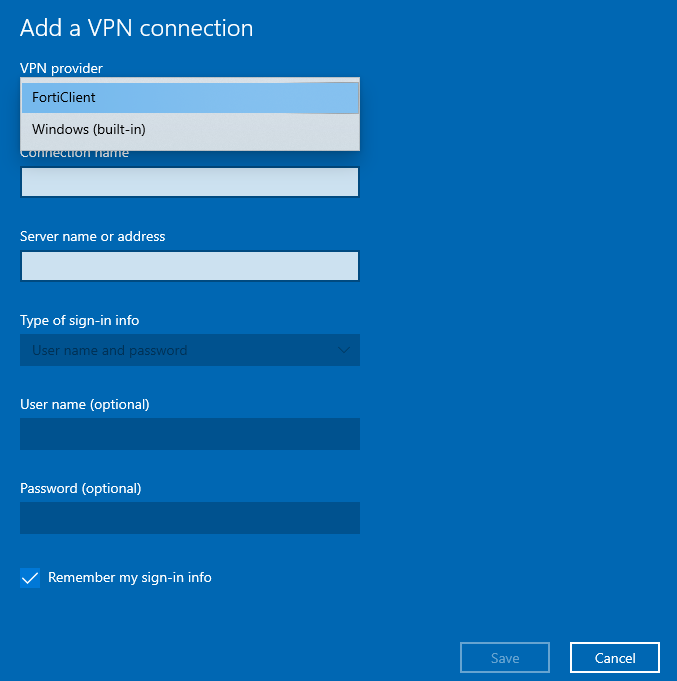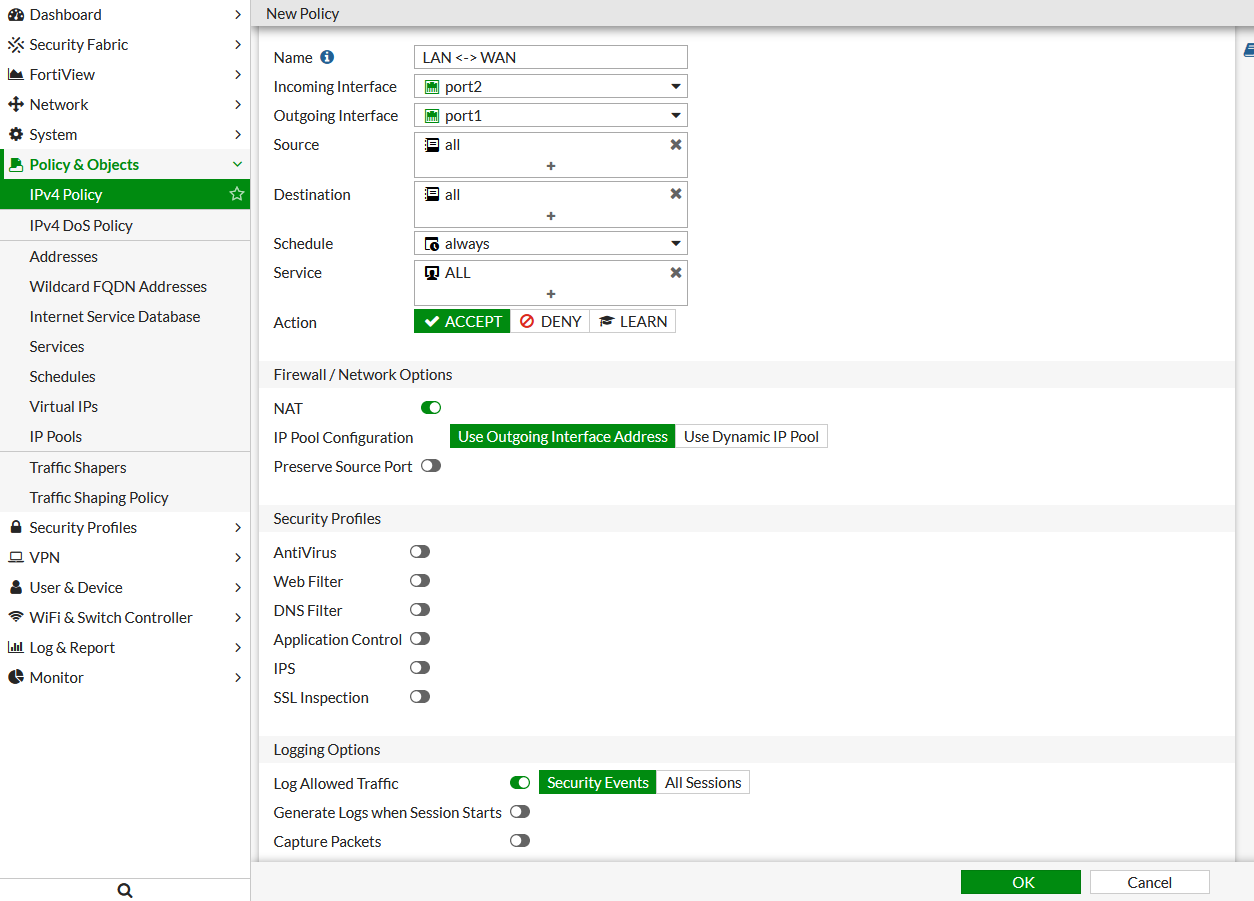
- #CONFIGURE FORTINET VPN CLIENT INSTALL#
- #CONFIGURE FORTINET VPN CLIENT WINDOWS 10#
- #CONFIGURE FORTINET VPN CLIENT SOFTWARE#
It can be done but I have found it also with some caveats.
#CONFIGURE FORTINET VPN CLIENT SOFTWARE#
So these would be things to keep in mind using Direct Access over Always On VPN as to what software might be impacted with such limitations.Īs stated it is also where Microsoft is moving support as they do not promote Direct Access anymore.įorticlient as mentioned below just isn't on the same level of simplification yet.

It just doesn't work as per Trend Micro's own documentation. This is not as apparent until you run into third party software like Trend Micro which uses ipv4 to connect to services on the backend and break under Direct Access even with IPv6 to IPv4 mapping. Plus, Always on VPN is IPV4 transparent where Direct Access is IPV6 as a must to function (IPV6 DNS entries are indeed crucial to not buggering it up). You can use 802.1X authentication (using NPS on the inside) to use the computer Certificate of joined domain pc's to accomplish the automatic authentication and avoid users fat fingering passwords and locking out accounts or expiring passwords. Replaced it with Netmotion and now there are 0 issues with the VPN and their apps.īest approach is to setup Microsoft Always On VPN server and NAT this to an outside IP or one-to-one NAT it outside. For assistance with connecting to the VPN contact the ITS Help Desk. Start by going to and logging in using your UNF credentials and validating your identity using two-factor authentication (powered by Duo).
#CONFIGURE FORTINET VPN CLIENT INSTALL#
There were always a lot of complaints and problems, even with auto-reconnect, connecting before logon, and saved credentials. UNF uses a VPN application called FortiClient that is easy to install and set up. Open the FortiClientVPNOnline. The first step to deploy FortiClient VPN is to exact the MSI file from the FortiClient installer, as you can see the installation from the vendor is a. I tried using FortiClient VPN in patrol cars for a while. Extracting the MSI file from the FortiClient installer. Users love it because it can trick most apps into thinking they are connected, even when there are short dropouts in the connection. You will not find anything that can beat it as an all-around VPN platform. If you want a best-of-breed VPN solution to meet your needs look at Netmotion Mobility.
#CONFIGURE FORTINET VPN CLIENT WINDOWS 10#
I can’t find any documentation for a working Windows 10 VPN client connecting to a FortiGate. I have a feeling that it would be easier though to just setup a Windows RRAS Server as documentation is available.

It may be possible to use this client to create a real always-on VPN with the FortiGate. There is a FortiClient in the Windows 10 App Store that integrates with the Windows built-in VPN. It can also integrate third-party plugins. I am looking at the possibility of using the Windows 10 Enterprise built-in VPN client. That is not an always-on VPN like what you want, as you have to wait for a user to login before it is connected. It does support a VPN that can connect right before the user logs on. The traditional FortiClient/FortiGate combo does not support an always-on VPN that stays connected all the time.


 0 kommentar(er)
0 kommentar(er)
